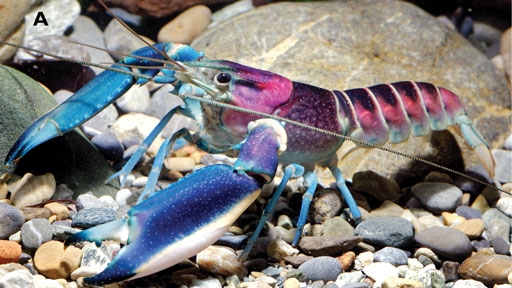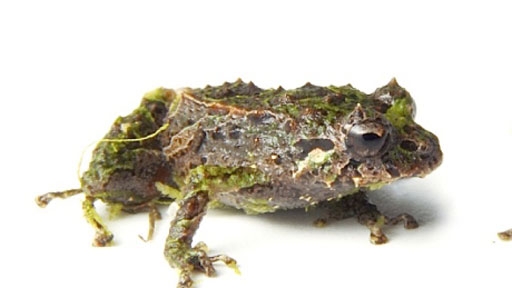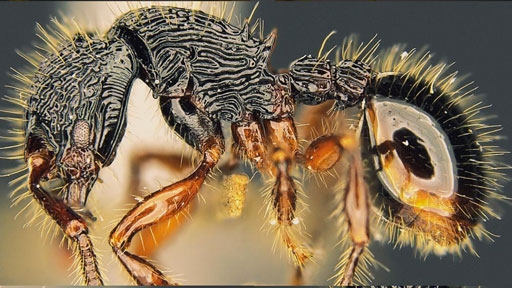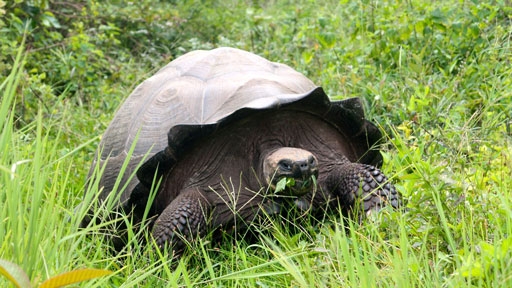
So much of the animal world is still unknown to us even today. Every year, scientists discover amazing new species that demonstrate the immense variety in our world. Join us to find out what 10 mind-blowing discoveries were made recently:
[nextpage title=”Leaf shaped spider”]

Image: Kuntner et al via Facebook
Is that a leaf, a pear or some kind of weird insect? Believe it or not, it’s a spider with amazing camouflage skills, thanks to its pear-shaped body that looks like a healthy, green leaf on one side and a dead leaf on the other.
It gathers dead leaves from the forest floor and attaches them to a branch with silk to create the perfect cover.
[nextpage title=”Waterfall centipede”]

Image via Wikimedia Commons
Welcome to your worst nightmare. It turns out centipedes aren’t just a problem on land – they can swim too! The first species of amphibious centipede was discovered in South East Asia.
The giant centipede can grow up to 8 inches long and like other centipedes, is both venomous and carnivorous.
[nextpage title=”Hog-nosed rat”]

Image: Kevin C Rowe and Museum Victoria via Wikimedia Commons
With its pig-like nose, giant ears, vampire teeth and long hind legs, this is definitely one strange looking rodent.
The rat was discovered in 2013 on the Indonesian island of Sulawesi and classified as not just a new species, but an entirely new genus. But scientists aren’t sure what purpose their special noses serve.
[nextpage title=”Illacme tobini millipede”]

Image: Paul Marek/Virginia Tech
It may not look like much at first glance, but this millipede has 414 legs, 200 poisonous glands, and four penises! The leggy millipede is a cousin of the Illacme plenipes, which has 750 legs — more than any animal on the planet.
It also has no eyes and strange “mouthparts” that suggest it might eat only fungus.
[nextpage title=”Blue crayfish”]

Image: ZooKeys via Wikimedia Commons (CC BY 3.0)
While this colorful creature was popular for more than a decade in exotic pet stores across Europe, North America and Asia, scientists only recently classified this species of crayfish.
Its name, Cherax pulcher comes from the Latin word “pulcher” for beautiful, which is an apt description for this vivid blue and violet specimen. There are two known variations: one that’s white, blue and purple and another that’s green-gray.
[nextpage title=”Shape-shifting treefrog”]

Image via Wikimedia Commons
It’s no bigger than a fingernail, but this treefrog from the Andes Mountains in Ecuador has some impressive skills. T
he tiny frog can change the texture of its skin from spiky to smooth in a matter of minutes, making it the first shape-shifting amphibian ever discovered.
[nextpage title=”Ruby seadragon”]

Image: Scripps Oceanography via YouTube
This bright red creature is one of three known species of seadragon – a type of fish that’s related to seahorses and pipefish and found only in Australia.
After initially discovering archived specimens in museum collections, scientists finally spotted a ruby seadragon in the wild for the first time in 2015!
[nextpage title=”Raisin ant”]

Image: ants_of_singapore via Instagram
It’s like a tiny work of art! A beautiful new species of ant featuring skin with intricate wrinkles like that of a raisin was discovered in Singapore.
The ant also has tiny golden spikes that face forward on its body, unlike other members of the same genus that tend to have backward-facing spines.
[nextpage title=”Giant tortoise”]

Image: Andy Kraemer via Flickr (CC BY-SA 2.0)
Originally thought to be part of an existing species of giant tortoises on the Galapagos Islands, this new species was recently classified as genetically distinct.
The Eastern Santa Cruz tortoise has a more compressed shell and evolved more recently than those species living on the western side of the island.
[nextpage title=”Peacock spiders”]

Image: National Geographic via YouTube
Researchers in Australia have discovered seven new species of peacock spiders – the intricate and colorful genus of spiders known for their elaborate mating dances.
The new species include Maratus vespa (so-called for its wasp-like appearance), Maratus bubo (which resembles an owl) and Maratus alba (which is covered in white fuzz.)
Check out this video of their funky mating rituals:
Featured image: Facebook / DR videnskab




